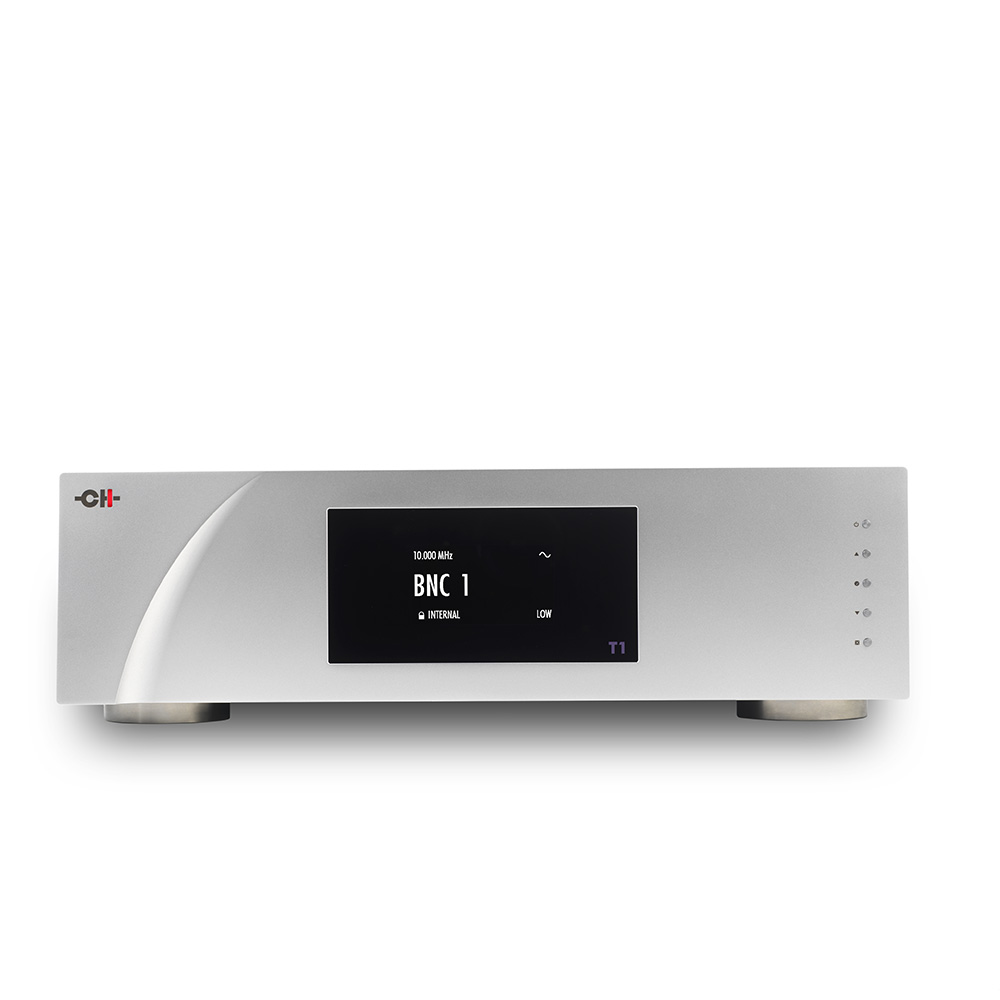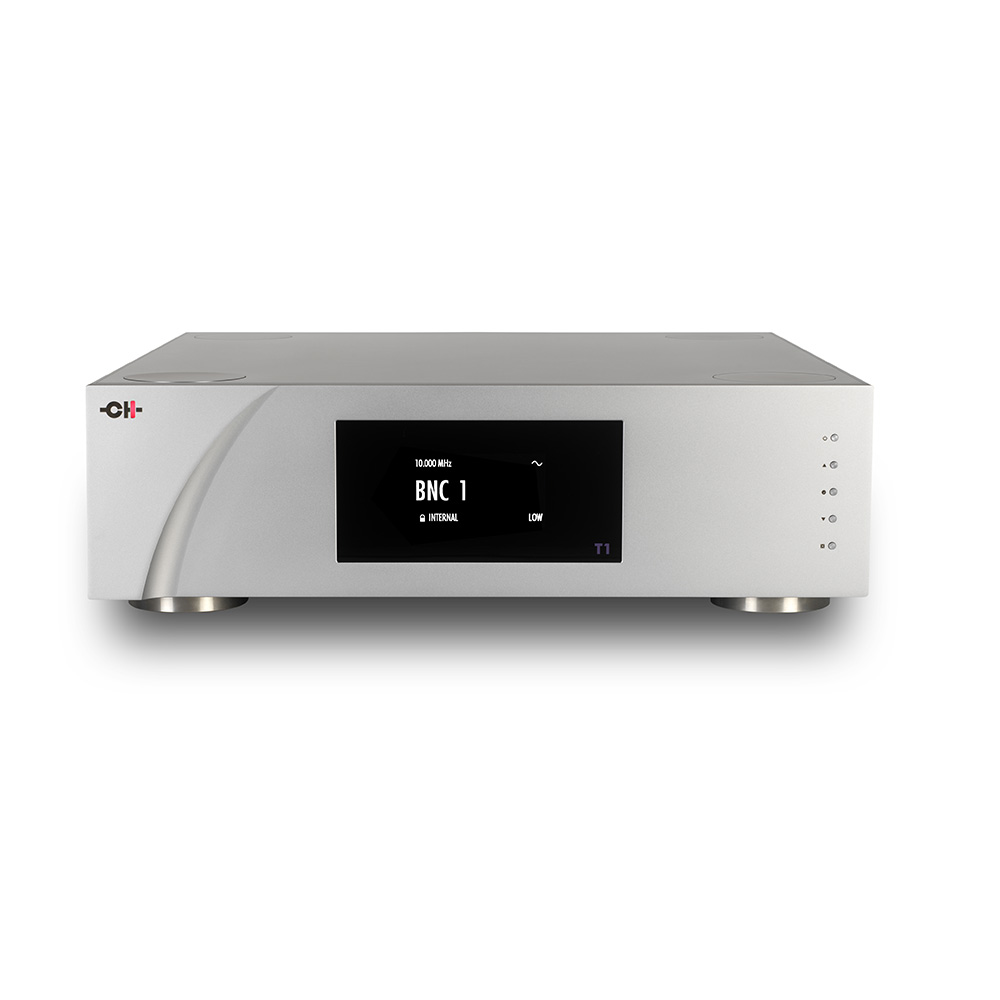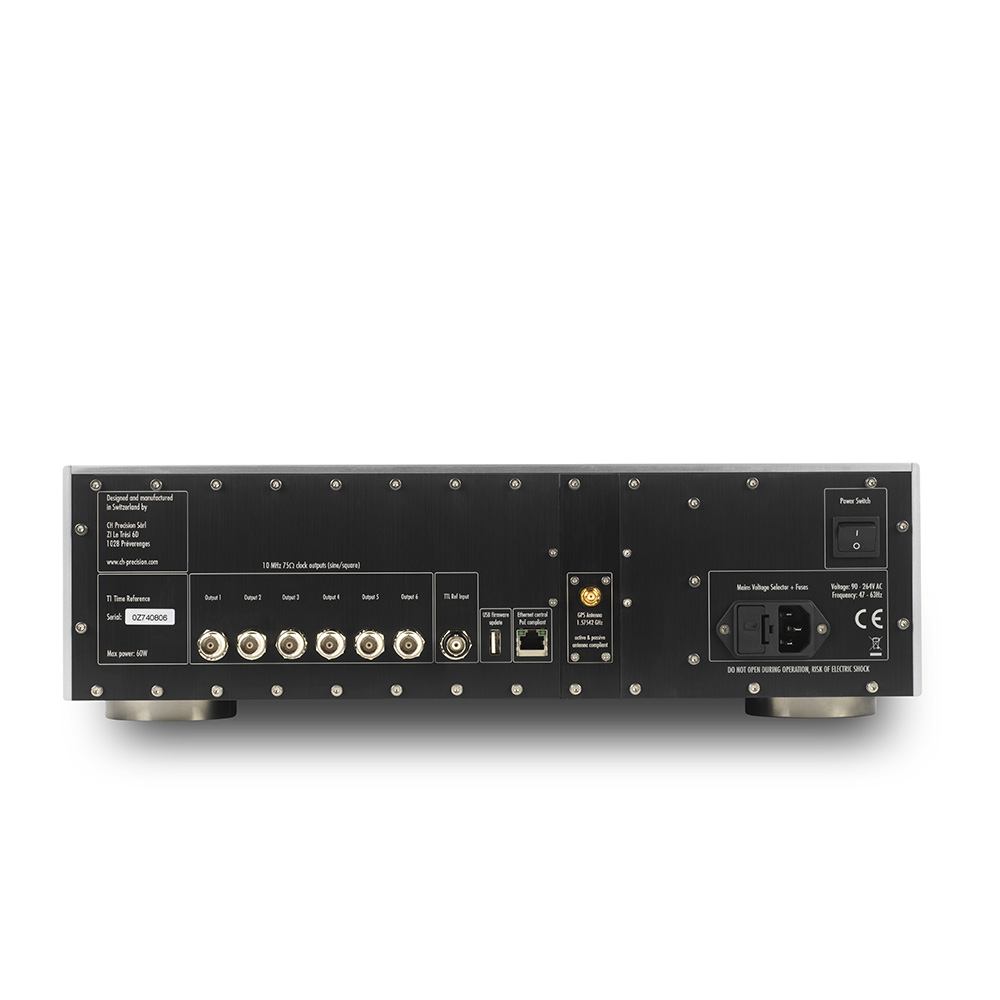CH PRECISION T1 CLOCK GENERATOR
The problem is, that as soon as you have more than one box (and one master clock) in the system – for instance, if you use a transport and DAC – then the errors can increase exponentially. The easiest solution is to synchronize the two clocks, designating one as the master and slaving the other to it. That’s exactly the solution provided by the Clock-Sync cards available for the CH Precision D1, C1 and I1, while the sophisticated software control incorporated into each of the units allows owners to designate master and slave according to circumstances and system topology. But what’s better than syncing two or more units to a single master clock? Syncing them all to a single, superior, external reference point – a reference like the T1 Time Reference external clock.
The T1 generates a super accurate, low-jitter signal that delivers measurably lower phase noise and more accurate transfer and conversion of digital signals. It is built around a high-frequency 10MHz oven controlled oscillator (OCXO), its core temperature and output further stabilized by encapsulation in a mechanically isolated billet aluminum block. Why not just use one of the popular and readily available Rubidium clock modules like everybody else? Because those Rubidium modules have a limited life span – generally between six and eight years – and they contain radioactive material. At CH Precision we expect our products to have a much longer working life than that, so incorporating components with a finite life is contrary to all our beliefs – especially if those components then present a serious disposal issue.



